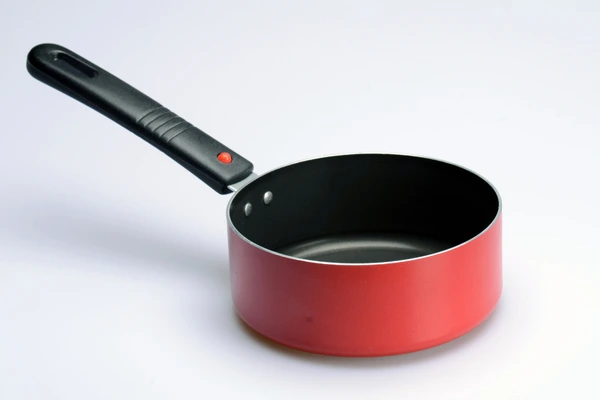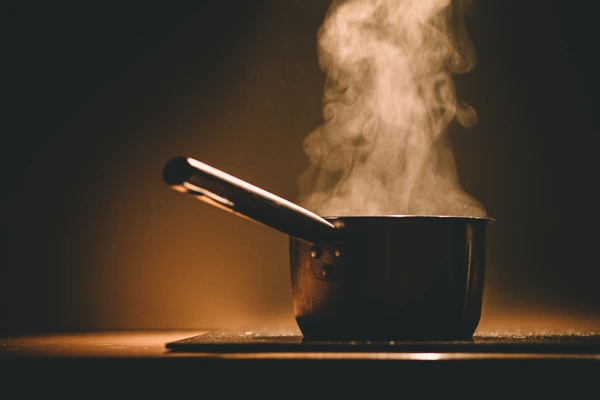If you’re craving that strong, velvety cup of Turkish coffee but don’t have the traditional gear, you can still make it. A simple saucepan can absolutely get the job done. Sure, it’s not the “classic” setup, but you can still do a decent job. In this guide, I’ll show you tips on how to make Turkish coffee in a saucepan that tastes like it was prepared in a cezve.
How to Make Turkish Coffee in a Saucepan?
To make Turkish coffee in a saucepan, you want to mimic what happens in a cezve as much as possible. The goal is still the same. Slow heating, no stirring once it’s on the stove, and that signature foam. Here’s how to pull it off:
- Use the cup you plan to drink from to measure cold water. One cup per person. Pour it straight into your saucepan.
- Add one heaping teaspoon of extra-finely ground Turkish coffee per cup. Add sugar now if you want.
- Place the saucepan over the lowest heat your stove can manage. As it heats, you’ll see bubbles forming around the edges, and the coffee will start to thicken. The foam will rise slowly, but don’t let it boil over. As soon as it starts to climb, pull it off the heat.
- All that is left now is to pour it into cups.
Wondering about other methods? Here, we break down whether you can use a French press to make Turkish coffee.
What Can Go Wrong When Making Turkish Coffee in a Saucepan?
To be honest, a lot of things can go wrong. Here is what can happen, and what you can do to avoid those situations.
No Foam?
This is the most common issue when using a saucepan. Most saucepans have a wide base, which spreads the heat too fast and kills foam before it forms. Try using the smallest saucepan you have. You should look for the one with higher walls and a smaller bottom.

Coffee Boils Too Fast
Saucepans aren’t built for the slow-simmer Turkish coffee needs. If your coffee bubbles before the foam has time to build, lower the heat even more or take it off the burner for a few seconds mid-process. You want a slow rise, not a rolling boil.
Foam Disappears After Pouring
This happens if you pour too quickly or from too high. Use a spoon to scoop the foam into your cup first, then gently pour the rest of the coffee along the side of the cup. Be gentle, treat it like you’re pouring liquid gold.
Want to make Turkish coffee in a traditional way? Check out this guide to learn how to use a cezve.
Final Thoughts
Making Turkish coffee in a saucepan isn’t traditional, but it can work. If you use the right grind, control your heat, and give the foam the respect it deserves, you can absolutely brew a legit cup without a cezve. It might take a few tries to get the feel, but once you do, you’ll realize the ritual isn’t about the tool, it’s about the method.
FAQ
Can you make Turkish coffee in a saucepan?
Yes, you can. A saucepan won’t give you the exact same control as a cezve, but if you use a fine grind, keep the heat low, and pay attention to the foam, you can make a solid cup.
What saucepan is the best for making Turkish coffee?
Go for the smallest one you have. Look for a saucepan with a narrow base and tall sides. This helps control the heat better and gives the foam time to build. Avoid wide, shallow pans. They heat too fast and tend to kill the foam before it forms.
What if I only have a larger saucepan?
You can still make it work, but you’ll need to be extra careful. Keep the heat as low as possible, and watch closely for the foam. One trick: make more than one cup at a time. A larger batch can help offset the wide base and slow things down just enough for a better result.

